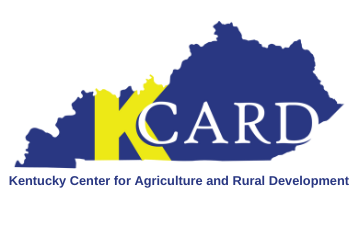The USDA’s Value-Added Producer Grant (VAPG) program is a cornerstone for farmers, ranchers, and agricultural producers who wish to diversify their operations and expand their value-added products. For the current 2025 cycle and future cycles, there are some significant changes that you need to know if you’re interested in applying.
Resilient Food Systems Infrastructure (RFSI) Frequently Asked Questions
The Resilient Food Systems Infrastructure (RFSI) Program is currently accepting applications until April 5th for Infrastructure and Equipment-only projects that expand capacity for aggregation, processing, manufacturing, storing, transporting, wholesaling, and distribution of food products, for specialty crops, dairy, grains for human consumption, aquaculture, and other food products, excluding meat and poultry.
We’ve been asked lots of questions about the program, so we worked with the Kentucky Department of Agriculture to develop this list of frequently asked questions.
Overview of USDA Local Meat Capacity Grant
The USDA Agricultural Marketing Service recently announced a new grant program for meat processors: the Local Meat Capacity Grant (Local MCap), due on July 19th. For more information on the program including who can apply, what projects are eligible, and how to get started, check out this blog post!
Behind the Scenes of Applying for Federal Grant Programs
We’re often asked by farmers and agribusinesses how to apply for federal grant programs, such as the USDA Value-Added Producer Grant (due on May 16). While these grant programs can be a good option for growing agribusinesses to obtain capital, it’s important to understand how much work goes into receiving a grant, even beyond the application itself. Often, applying for federal grants requires 40 to 80 hours of work. Check out these four tips to help prepare you for applying for a federal grant program.
How Can I Get Free Money? Four Basic Steps of the Grant Application Process
We get asked all the time how to get “free money” in the form of grants for on-farm projects. The answer is pretty simple: there is no free money. While grants can be a helpful way to fund worthwhile projects on the farm, there is a lot of work that goes into receiving a grant. In this post, we discuss some of the key steps of the grant application process.
USDA Agricultural Marketing Service Grants – due soon, so which one (if any) is right for me?
The USDA Agricultural Marketing Service recently announced a record amount of funding for several of their key grant programs:
Screening for fit: How to save time when looking for grants
When you first find a grant program that could fit your interests, your main source of information will typically be a document called the “Request for Applications”, also called the “RFA” or in federal programs, a “Notice of Funding Availability” or “NOFA”. This document is key in determining if a grant is a good fit for you or your organization and can easily surpass 40 pages in length. While you will need to read the entire document eventually, we suggest reviewing the following sections first:
Growing Your Farm and Good Business Webinar Series Takeaways
In October and November, KCARD hosted a 6-week webinar series to help people work on their business and figure out what funding resources are out there that are good fits. Below are our top 5 takeaways from the series.
KCARD Guest Blogger: Farm Service Agency
Over the next couple of weeks, we will be showcasing partners in our Growing Your Farm and Food Business Webinar series. These partners provide funding opportunities to Kentucky’s agricultural producers and agribusinesses. In this post, we are learning about the Farm Service Agency and the programs they administer.
KCARD Guest Blogger: Kentucky State University
Over the next couple of weeks, we will be showcasing partners in our Growing Your Farm and Food Business Webinar series. These partners provide funding opportunities to Kentucky’s agricultural producers and agribusinesses. In this post, we are learning about Kentucky State University and the assistance they provide.















